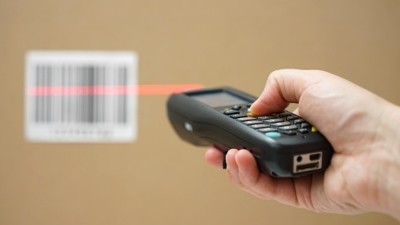COVID-19 and cold-chain: China implements traceability requirements for all chilled imported foods

This will first be implemented in the capital city of Beijing, where the local Market Supervision Administration and Bureau of Commerce previously already made this traceability requirement mandatory for meat and seafood imported into the country via cold chain, but only recently announced the expansion of this to all frozen food products.
“To further strengthen our management of imported cold-chain transported foods, we have decided to expand the scope of food traceability under the Beijing Cold Chain Food Traceability Platform for such foods,” said the Beijing Market Supervision Administration via an official statement.
“All imported cold-chain food products which are stored at 0°C temperatures or below will now be included in varieties that need to follow traceability requirements under the platform. These include frozen grain-based products (e.g. rice and noodles), frozen vegetables, frozen fruits, frozen drinks like juice, frozen dairy products like butter and cheese, ice creams and all other such products.
“Imported cold-chain foods which [are traced and found to not] comply with the necessary requirements of having an inspection and quarantine certificate, a COVID-19 Nucleic Acid PCR Test report, a disinfection certificate, and available traceability data will not be purchased, handled, transported or stored [upon reaching China].”
The Beijing Cold Chain Food Traceability Platform is used from point of product registration with the platform until it reaches consumers in supermarkets – Foreign food manufacturers looking to export to the Chinese market via Beijing will now have to register their products and provide the documentation above, in addition to uploading traceability data such as batch number, product codes, country of origin, port of entry and so on.
Unique QR codes are provided for individual food products and displayed in retail outlets, which consumers can scan with a mobile phone after downloading the platform applet on WeChat or Alipay to check the available traceability information.
Food as a COVID-19 carrier
China has been adamant that the virus causing COVID-19 can be transported via food products ever since an outbreak was linked to salmon from a wholesale food market in Beijing last year, and has implemented a raft of prevention measures and strict requirements on food imports.
Despite widespread protests from the international trading community, these tough regulations are still in place till date and arguably forcibly accepted by food exporters who need access to China’s huge consumer population, but no confirmed evidence has yet emerged to confirm this mode of transmission and international experts continue to argue against it.
“Currently, there is no evidence to suggest that food animals could be a possible route for transmission of COVID-19 to humans or that food animals can become infected by humans,” the World Health Organisation stated on its official COVID-19 Q&A page.
“Coronaviruses cannot multiply in food – they need a live animal or human host to multiply and survive.”
This was also recently emphasized by the U.S. Department of Agriculture, the U.S. Food and Drug Administration (FDA) and the U.S. Centers for Disease Control and Prevention (CDC) in a joint statement on February 18 2021, stressing that there is ‘no credible evidence’ for this.
“Consumers should be reassured that we continue to believe, based on our understanding of currently available reliable scientific information, and supported by overwhelming international scientific consensus, that the foods they eat and food packaging they touch are highly unlikely to spread SARS-CoV-2,” said the statement published on the US FDA page.
“While there are relatively few reports of the virus being detected on food and packaging, most studies focus primarily on the detection of the virus’ genetic fingerprint rather than evidence of transmission of virus resulting in human infection.”
Some of these studies have shown that the virus can survive on the surface of various meats for at least 21 days in both refrigerated and frozen conditions, as well as on other food products if not properly treated.
That said, the US FDA stressed that these were all not evidence of infection, and still not suitable to be used as evidence for food or food packaging to be considered a high-risk mode of COVID-19 transmission.
“Given that the number of virus particles that could be theoretically picked up by touching a surface would be very small and the amount needed for infection via oral inhalation would be very high, the chances of infection by touching the surface of food packaging or eating food is considered to be extremely low,” said the FDA.



















